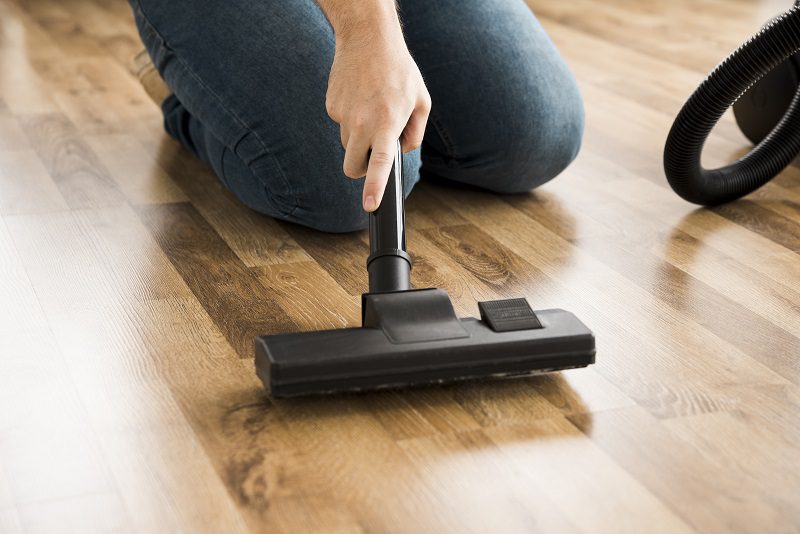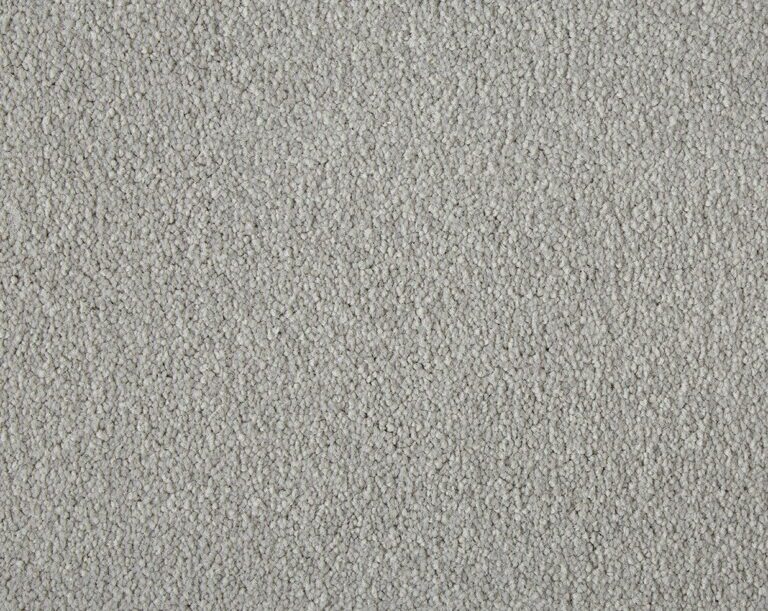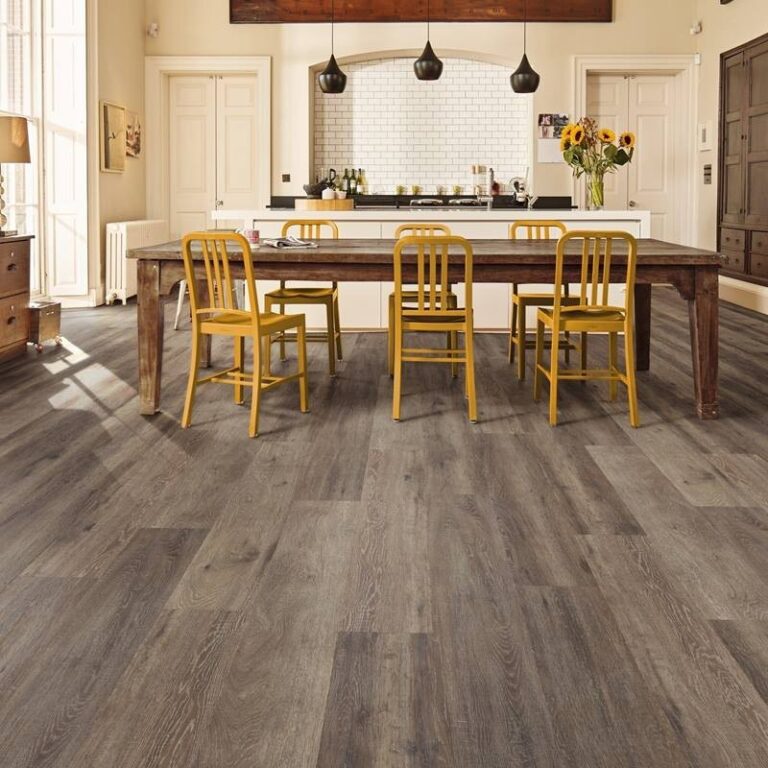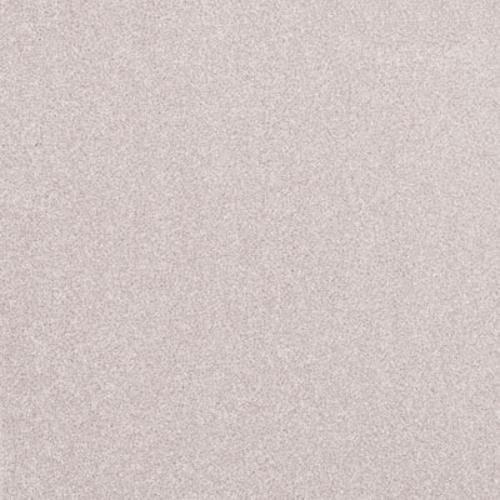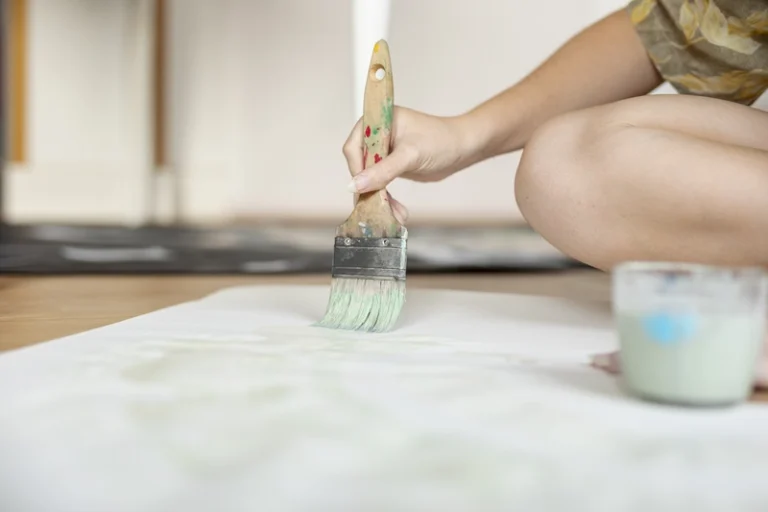Are you considering vinyl flooring for your home but unsure of how to properly care for it? In this vinyl flooring care guide, we will explore what vinyl flooring is and the different types available.
We will provide tips on maintaining your vinyl flooring, dos and don’ts of care, common mistakes to avoid, and how to remove stubborn stains. Whether you have sheet vinyl, vinyl plank, or vinyl tile, this article will help you keep your floors looking pristine for years to come.
What Is Vinyl Flooring?
Vinyl flooring is a versatile and durable alternative to traditional flooring options. It is a synthetic flooring material that emulates the look of natural materials like wood or stone but with added benefits such as water resistance and easy maintenance.
There are various types of vinyl flooring, including Luxury Vinyl Tiles (LVT), sheet vinyl, and rigid core vinyl. LVT offers a high-end aesthetic appeal, while sheet vinyl provides a seamless and water-resistant surface. Rigid core vinyl combines the durability of laminate flooring with the waterproof properties of luxury vinyl. The installation of vinyl flooring is relatively straightforward, with options for glue-down, click-lock, or loose-lay installation methods, making it a popular choice for both DIY enthusiasts and professionals.
The Types Of Vinyl Flooring
Vinyl flooring comes in various types to suit different preferences and needs. The common types include Vinyl Plank, Luxury Vinyl Tiles, Sheet Vinyl, and Rigid Core Vinyl, each offering unique characteristics and benefits.
Starting with Vinyl Plank, this type mimics the look of hardwood with realistic wood textures and grain patterns. It is durable, water-resistant, and easy to maintain, making it perfect for high-traffic areas like living rooms and kitchens. Installation methods for Vinyl Plank typically involve clicking or glueing down individual planks.
On the other hand, Luxury Vinyl Tiles offer a high-end appearance resembling natural stone or ceramic tiles, enhancing the aesthetics of spaces. It is resilient and can withstand moisture, ideal for bathrooms and basements. Installation options include glue-down, click-lock, or loose-lay methods.
Sheet Vinyl is a cost-effective option that comes in large rolls, providing a seamless look and easy maintenance. It is water-resistant, making it suitable for areas prone to spills such as kitchens and laundry rooms. Installation involves glueing the sheet directly onto the subfloor.
Lastly, Rigid Core Vinyl is known for its high stability and durability, with a sturdy core that can handle heavy foot traffic. It is also water-resistant, making it suitable for commercial spaces. Installation methods for Rigid Core Vinyl include floating, glue-down, or click-lock systems.
a. Sheet Vinyl
Sheet vinyl is a popular choice for large areas due to its seamless installation and cost-effectiveness. It comes in rolls and offers a wide range of design options, making it versatile for different interior styles.
One of the key characteristics of sheet vinyl flooring is its durability and resistance to water, making it ideal for kitchens and bathrooms.
When installing vinyl sheets, it is essential to prepare the subfloor properly to ensure a smooth and long-lasting finish.
Regular cleaning with mild detergent and avoiding harsh chemicals will also help maintain the appearance of your vinyl floor.
b. Vinyl Plank
Vinyl plank flooring mimics the look of hardwood but with added durability and water resistance. It is a popular choice for residential and commercial spaces due to its easy installation and low maintenance.
One of the key features of vinyl plank flooring is the wear layer, which protects against scratches, stains, and daily wear and tear, making it an ideal flooring option for high-traffic areas. The felt tips on the bottom of each plank allow for easy installation over existing floors without the need for extensive preparation. This not only simplifies the installation process but also reduces the costs and time involved.
Another benefit of vinyl plank flooring is its versatility. It comes in a wide range of styles, colours, and textures, allowing you to achieve the look of hardwood or tile without the associated maintenance requirements. Its water resistance makes it suitable for areas prone to moisture, such as kitchens and bathrooms.
In terms of installation, vinyl plank flooring can be installed using various methods, including the floating floor technique, where planks click together without the need for glue or nails. This not only makes installation quick and hassle-free but also allows for easy removal or replacement of damaged planks. Vinyl plank flooring offers a cost-effective, durable, and aesthetically pleasing flooring option for both residential and commercial spaces.
See product: Ted Todd Classic Tones Madingley – Extra Wide Plank (2.2m x 220mm)
c. Vinyl Tile
Vinyl tile flooring offers the look of ceramic or stone tiles but with the added benefits of warmth and softness. It is available in a wide range of designs and sizes, making it a versatile option for various applications.
When installing vinyl tile flooring, it is crucial to ensure a smooth and clean subfloor to prevent any imperfections from shining through. Regular maintenance includes sweeping or vacuuming debris and damp mopping the surface when needed, making it a relatively low-maintenance flooring option.
See product: Floorify Big Tiles Jellyfish
Vinyl Flooring Care Guide
A proper vinyl flooring care is essential for maintaining the beauty and longevity of vinyl flooring. Regular cleaning, preventive measures, and occasional deep cleaning are key components of vinyl flooring maintenance.
In terms of regular maintenance, using the right cleaning products is crucial. Opt for gentle cleaners that are specifically designed for vinyl flooring. Avoid harsh chemicals or abrasive tools that can damage the surface. It’s also advisable to sweep or vacuum regularly to prevent dirt and dust buildup. Placing doormats at entrances and using protective pads under heavy furniture can help prevent scratches and scuffs.
a. Regular Cleaning
The first vinyl flooring care is regular cleaning, involving daily or weekly maintenance tasks to keep vinyl flooring looking its best. It includes sweeping, vacuuming, and mopping with a gentle cleaner.
How to clean vinyl flooring? It is essential to start by sweeping the floor to remove any loose dirt and debris. This prevents scratching during the cleaning process. Vacuuming can follow to remove finer dust particles and pet hair effectively.
After dry cleaning, the next step is mopping. Use a damp mop with a mixture of water and a gentle cleaning solution. It is crucial to avoid abrasive cleaners or harsh chemicals that may damage the vinyl surface.
For deeper cleaning, a commercial vinyl floor cleaner specific to your flooring type can be used. Always follow the manufacturer’s guidelines for cleaning products to maintain the integrity and longevity of your vinyl floor. Learn more about how to clean vinyl flooring.
b. Preventive Measures
Preventative measures help protect vinyl flooring from damage and wear. Using furniture pads, area rugs, and floor mats at entrances can prevent scratches and minimise dirt accumulation.
- For heavy furniture pieces, it is advisable to use furniture pads that distribute weight evenly and reduce the risk of indentation on the vinyl surface. Placing protective pads under chair legs and table corners can also prevent scratch marks caused by dragging.
- Floor mats with non-slip backing offer an effective solution to trap moisture and debris, safeguarding the vinyl from staining and water damage.
- Introducing area rugs in busy areas not only enhances the visual appeal but also provides an additional layer of protection against marks and spills.
c. Deep Cleaning
Deep cleaning should be done periodically to remove stubborn dirt and stains from vinyl flooring. Using specialised cleaners and techniques can help restore the floor’s appearance.
When embarking on deep cleaning for vinyl flooring, start by sweeping or vacuuming the surface to rid it of loose debris and dust. Next, mix the recommended cleaning solution according to the manufacturer’s instructions.
Apply the solution onto the floor using a damp mop or cloth, ensuring even coverage. For tough stains, let the solution sit for a few minutes before gently scrubbing with a soft-bristled brush.
Rinse the floor thoroughly with clean water and allow it to air dry completely. To maintain the vinyl floor’s shine, consider applying a thin coat of floor polish or sealer after cleaning.
The Dos And Don’ts Of Vinyl Flooring Care
Understanding the dos and don’ts of vinyl flooring care is crucial to maintaining its beauty and durability.
By following the proper maintenance routine, you can ensure that your vinyl floors remain in top condition for years to come. One essential tip is to regularly sweep or vacuum the floor to remove dirt and debris that can cause scratches over time. It is also important to use gentle cleaning solutions specifically designed for vinyl flooring, as harsh chemicals can damage the surface. Placing mats at entrance points can help prevent dirt from being tracked onto the floor, reducing the need for frequent cleaning and minimising wear and tear.
Dos
The dos of vinyl flooring care include regular sweeping and mopping, using protective mats, and cleaning up spills promptly. These practices help prevent damage and maintain the appearance of your vinyl floors.
Opt for gentle cleaners or a mixture of vinegar and water for effective yet gentle cleaning. Placing furniture pads under heavy pieces can prevent scratches and dents on the vinyl surface. It’s also important to maintain consistent humidity levels in the room to avoid the expansion or contraction of the planks over time.
Don’ts
Avoiding certain practices is essential for preserving the quality of vinyl flooring. Don’t use harsh chemicals, neglect regular cleaning, or expose the floors to sharp objects to prevent damage and premature wear.
One of the most common mistakes homeowners make when caring for vinyl flooring is using harsh chemicals. These chemicals can strip away the protective layer on the vinyl, making it more susceptible to scratches and discolouration.
Another pitfall to avoid is neglecting regular cleaning. Dirt, dust, and debris can build up over time, causing the floors to look dull and worn. It’s important to sweep or vacuum frequently and mop with a gentle cleaner to maintain the vinyl’s appearance.
Improper handling is also a significant concern for vinyl flooring. Sharp objects like high heels or furniture legs can leave permanent marks or gouges on the surface. To prevent this, use furniture pads and be cautious when moving heavy items across the floor.
The Common Mistakes In Vinyl Flooring Care
Recognising and rectifying common mistakes in vinyl flooring care can help preserve the integrity and appearance of your floors. From avoiding harsh chemicals to ensuring regular maintenance, addressing these errors is essential for long-lasting flooring.
a. Using Harsh Chemicals
One of the common mistakes in vinyl flooring care is the use of harsh chemicals that can damage the surface and wear down the protective layer. Opt for gentle cleaners and approved solutions to avoid detrimental effects.
When harsh chemicals come into contact with vinyl flooring, they can lead to discolouration, weakening of the material, and even premature ageing.
Using gentle cleaners with pH-neutral formulas is a safer option to maintain the floor’s appearance and durability over time.
Not only do these milder solutions effectively clean the surface without causing harm, but they also help preserve the protective coating, ensuring a longer lifespan for your vinyl flooring.
b. Skipping Regular Cleaning
Neglecting regular cleaning routines is a common mistake that can lead to dirt buildup and accelerated wear on vinyl flooring. Establishing a consistent cleaning schedule is crucial for preserving the appearance and condition of the floors.
Over time, dirt and grime can cause scratches and stains on the vinyl flooring, impacting its overall look and longevity. Without proper care, the once vibrant and smooth surface may lose its lustre, becoming dull and worn out. Neglecting cleaning routines can make the floor more prone to cracks and damage, requiring costly repairs or even replacement.
By incorporating simple maintenance practices such as regular sweeping, mopping, and avoiding harsh chemicals, you can extend the lifespan of your vinyl flooring while keeping it looking as good as new. It’s essential to address spills and stains promptly to prevent stubborn spots from setting in and causing permanent discolouration.
c. Not Protecting From Sharp Objects
Failing to protect vinyl flooring from sharp objects like high heels or furniture legs can result in scratches and dents that compromise the floor’s appearance. Using protective pads and taking precautionary measures can prevent damage.
One effective way to safeguard your luxury vinyl flooring is by placing felt tips under the legs of your furniture. These felt pads act as a buffer between the furniture and the floor, reducing the risk of scratches and dents.
Regularly sweeping or vacuuming your vinyl floor can help remove debris that could potentially cause abrasions. Another tip is to avoid dragging heavy furniture across the floor, as this can lead to unsightly marks. By implementing these simple yet effective strategies, you can preserve the beauty and longevity of your vinyl flooring.
How To Remove Stains From Vinyl Flooring
Accidental spills and stains are inevitable, but knowing how to effectively remove them from vinyl flooring can help maintain its pristine condition. From grease and oil stains to ink and red wine spills, addressing stains promptly is essential for preserving the floor’s appearance.
When dealing with grease and oil stains on vinyl flooring, start by blotting up as much of the spill as possible with a clean cloth or kitchen roll to prevent spreading. Next, mix a solution of warm water and a few drops of mild washing-up liquid or a specialised vinyl floor cleaner. Using a soft-bristled brush or sponge, gently scrub the stained area in circular motions. Rinse thoroughly with clean water and dry the spot with a towel.
1. Grease And Oil Stains
Grease and oil stains can pose a challenge on vinyl flooring due to their stubborn nature. Using specialised cleaners and absorbing agents can help lift the stains without damaging the floor’s surface.
One effective method for tackling grease and oil stains on vinyl flooring is to mix a solution of water and a specialised cleaner. Applying this solution to the stained area and leaving it to sit for a few minutes can loosen the stubborn stains. Using a soft-bristled brush to gently scrub the affected area can aid in lifting the grease and oil residue off the vinyl surface.
2. Ink Stains
Ink stains on vinyl flooring can be unsightly, but prompt action can help eliminate them effectively. Using gentle cleaners and blotting techniques can prevent the ink from setting onto the floor and causing permanent damage.
Dabbing the affected area with a cloth or paper towel can help absorb as much ink as possible before it penetrates deeper into the surface.
For stubborn stains, a mixture of water and white vinegar can be a powerful yet gentle cleaner. Simply apply the solution to the stain and gently scrub with a soft-bristled brush. Remember to rinse well and dry the area thoroughly to avoid any lingering residue.
Understanding the nature of vinyl flooring can be key to maintaining its appearance and longevity.
3. Red Wine Stains
Red wine spills can leave noticeable stains on vinyl flooring, but quick intervention can help mitigate the damage. Absorbing excess liquid, using stain removers, and gentle scrubbing can aid in removing red wine stains effectively.
Along with using a stain remover, consider creating a DIY cleaning solution using warm water and a small amount of washing-up liquid. This gentle yet effective solution can help lift the stain from the vinyl flooring without causing damage.
After applying the cleaning solution or stain remover, make sure to thoroughly rinse the area with clean water to remove any residue. Pat the area dry with a clean towel to prevent water damage to the vinyl flooring.
Tips For Maintaining Vinyl Flooring
Implementing proper maintenance practices is essential for preserving the beauty and durability of vinyl flooring. Using furniture protectors, entryway mats, and regular pet nail trimming are key tips for maintaining pristine floors.
Additionally, regular cleaning routines play a vital role in extending the lifespan of your vinyl flooring. Sweep or hoover your floors daily to remove dust and debris that can scratch the surface. For deeper cleaning, mop with a manufacturer-approved cleaner diluted in water. Avoid strong chemicals that can damage the finish.
Be mindful of using gentle cleaning tools to prevent scratches. Soft-bristle brushes and non-abrasive mops are ideal choices. Consider placing felt pads under heavy furniture to prevent denting the vinyl.
Protect your floors from excessive sunlight exposure to prevent discolouration. Consider using curtains or blinds to control natural light. In high-traffic areas, place rugs strategically to minimise wear and tear on the vinyl.
Finally, regular inspections are crucial for detecting any issues early on. Check for loose edges, water damage, or scratches that may require immediate attention. By adhering to these maintenance tips, you can ensure that your vinyl flooring remains beautiful and pristine for years to come.
a. Use Furniture Protectors
Placing furniture protectors like pads or glides under heavy items can prevent scratches and indentations on vinyl flooring. These simple accessories help distribute weight and protect the floor’s surface.
Using hardboard sheets under furniture legs can provide an extra layer of protection against sharp edges and heavy impact. When selecting furniture pads, opt for a material that is suitable for vinyl floors, such as felt or rubber, to avoid any potential damage. It is essential to check and replace these protectors periodically to ensure their effectiveness in safeguarding the flooring. By incorporating these preventive measures, you can extend the longevity and beauty of your vinyl floors while maintaining their pristine appearance.
b. Keep Mats At Entryways
Placing mats at entrances and high-traffic areas can trap dirt and moisture, preventing them from reaching the vinyl flooring.
This simple practice not only protects your floors but also reduces wear and tear, extending the lifespan of your vinyl flooring. Investing in high-quality floor mat solutions designed for heavy-duty use can offer additional benefits. These mats are typically made of robust materials that withstand regular foot traffic and are easy to clean. For upkeep, regularly vacuuming or shaking out the mats outside can remove built-up debris, keeping them efficient in trapping dirt and moisture. Choose mats with anti-slip backing for safety and stability.
c. Trim Pet Nails Regularly
Pet nails can cause scratches and damage to vinyl flooring if left unchecked. Regular trimming of pet nails is essential to prevent accidents and preserve the floor’s integrity.
One effective technique for trimming pet nails is to use special nail clippers designed for dogs and cats. These clippers are gentle on the nails and help avoid splintering or cracking.
Another option is to incorporate felt tips on the pet’s nails, creating a soft barrier that reduces the impact on the floor. Along with nail maintenance, it’s crucial to keep your pet’s paws clean and moisturised to minimise scratching. By maintaining proper care practices, you can ensure that your luxury vinyl floors remain in pristine condition.
In essence, when adequately maintained, vinyl flooring can demonstrate resilience and longevity. Thus, there’s no reason to doubt choosing vinyl flooring for your residence. Not only does it offer notable durability, but it also delivers functionality and an appealing visual appeal to your home environment.
At TEKA Flooring, a wide array of vinyl flooring options awaits you. Whether you prefer tones in brown, natural hues, or lighter shades, TEKA Flooring has them all. Feeling unsure about which design would best complement your space? Don’t worry, just consult with us! We’re here to help you make the perfect choice.
Read Also:







